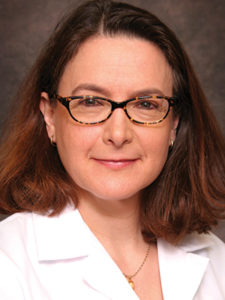
Crystal disease no longer means a lifetime of pain and agony. But nearly all of the advances in treatment have come in gout. It may not be difficult to diagnose disease caused by crystals, but outside the management of symptomatic hyperuricemia, there are more questions than answers when it comes to crystal disease.
“There are a lot of uncertainties when it comes to treating asymptomatic hyperuricemia or not,” said Thomas Bardin, MD, Professor of Rheumatology at Paris Diderot University, Paris, France. “In rodents, hyperuricemia clearly has bad consequences on blood pressure, renal function, and metabolic syndrome. But humans are not rats. No large human study has shown that if you decrease uricemia, you have less cardiovascular disease, fewer myocardial infarctions, less renal failure.”
Dr. Bardin will open the ACR Symposium Urate & Beyond on Tuesday from 8:30 – 10:00 am. The symposium will also highlight the latest findings in calcium pyrophosphate deposition disease and in calciphylaxis.
Nephrologists and cardiologists routinely treat asymptomatic hyperuricemia in much of the world, Dr. Bardin said. A large number of epidemiological studies clearly show that hyperuricemia is a risk marker for cardiovascular and renal disease. It is not at all clear that causation is part of the picture.
“Hyperuricemia precedes decline in renal function, metabolic syndrome, stroke, etc.,” Dr. Bardin said. “But this should be looked at with a critical eye.”
Epidemiological studies cannot rule out reverse causality, he said. It is just as possible that existing and unrecognized hyperinsulinemia or renal dysfunction contributed to hyperuricemia as well as later cardiovascular and renal problems as the more common assumption that hyperuricemia is the culprit.
Most Mendelian randomization studies do not link hyperuricemia genes with adverse cardiovascular and renal outcomes, but Mendelian studies are notoriously difficult to assess. Genetic effects may or may not be large enough to appear in these studies. And genes have their own compounding effects.
“Again, we have to look at these studies with a critical eye,” Dr. Bardin said. “What we must have as clinicians is trials that show that when you lower hyperuricemia, you improve the cardiovascular and renal prognosis. There are a few of these studies, but we are still awaiting large randomized trials to show us if we should aim at treating asymptomatic hyperuricemia in the way we treat hypocholesteremia.”
Even if appropriately powered trials suggest a clinical benefit from treating asymptomatic hyperuricemia, current treatments are less than ideal. Allopurinol can have significant skin side effects, Dr. Bardin noted. Febuxostat may increase the risk of cardiovascular complications.
“Before you prescribe, you need to hit the clear risk-benefit ratio,” he said. “This ratio is very unclear in asymptomatic hyperuricemia.”
Calcium pyrophosphate deposition disease (CPDD) poses its own problems.

“CPDD is often misdiagnosed, and we don’t yet have good treatments for it. This is in contrast to gout, where we have very effective treatments and are continuing to develop more,” said Ann K. Rosenthal, MD, the Will and Cava Ross Professor of Medicine and Chief of Rheumatology at the Medical College of Wisconsin, Milwaukee, WI. “It has an overlap with OA (osteoarthritis) and may be a very specific subset of OA patients. While we are still struggling with accurate diagnoses in CPDD patients, some new methods are on the horizon.”
CPDD causes an acute inflammatory arthritis, pseudogout, that looks similar to gout and can be treated much like gout using colchicine, prednisone, and nonsteroidal antiinflammatory agents.
“There is a critical lack of effective therapies for patients who have chronic forms of CPDD,” Dr. Rosenthal said. “We have very little to offer these patients. We can quiet down the inflammation, but we can’t prevent it or fully identify and avoid triggers. We are on the brink of understanding some important aspects of the pathogenesis of CPDD, which will have implications for this important subset of OA patients and for the development of new therapies.”
